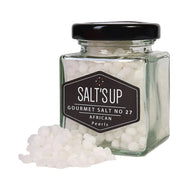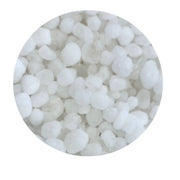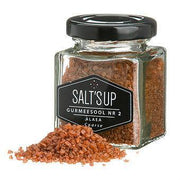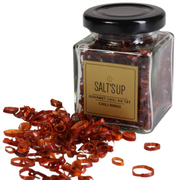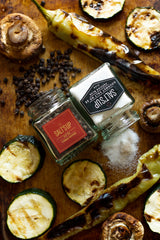CUBEB pepper
Cubeb pepper or in Latin, Piper cubeba, is a spice used to flavour food and beverages. It is from the Piperaceae family and classified as a pepper plant. The cubeb pepper also goes by the name tailed pepper, because of the tapering end.
Cubeb pepper contains terpenes, or aromatic plant compounds, further divided into monoterpenes and sesquiterpenes. This is the reason for the spice’s woody scent and taste. Piper cubeba will first taste a bit spicy, followed by a bit bitter. Then, a clean almost eucalyptus flavour emerges, with a hint of citrus flavour. Many liken the taste of it to a cross between black pepper and all spice.
Store whole spice in a cool dry place for up to 3 years. If freshly ground, use within three to six months. Always ensure your spice is encased in a glass bottle, with a tight-fitting lid, like the ones from Salt’s Up.
Produced in Indonesia
Cubebs have a warm, pleasant aroma, lightly peppery but also allspice-like, with a whiff of eucalyptus and turpentine. Cooking brings out the allspice flavor.
Cubebs are best suited to meat and vegetable dishes. Combines well with bay, cardamom, cinnamon, curry leaf, rosemary, sage, thyme and turmeric.
The dried pericarp is wrinkled, and its color ranges from grayish brown to black. The seed is hard, white and oily. The odor of cubebs is described as agreeable and aromatic and the taste as pungent, acrid, slightly bitter and persistent.
35gr / 1.23oz jar








